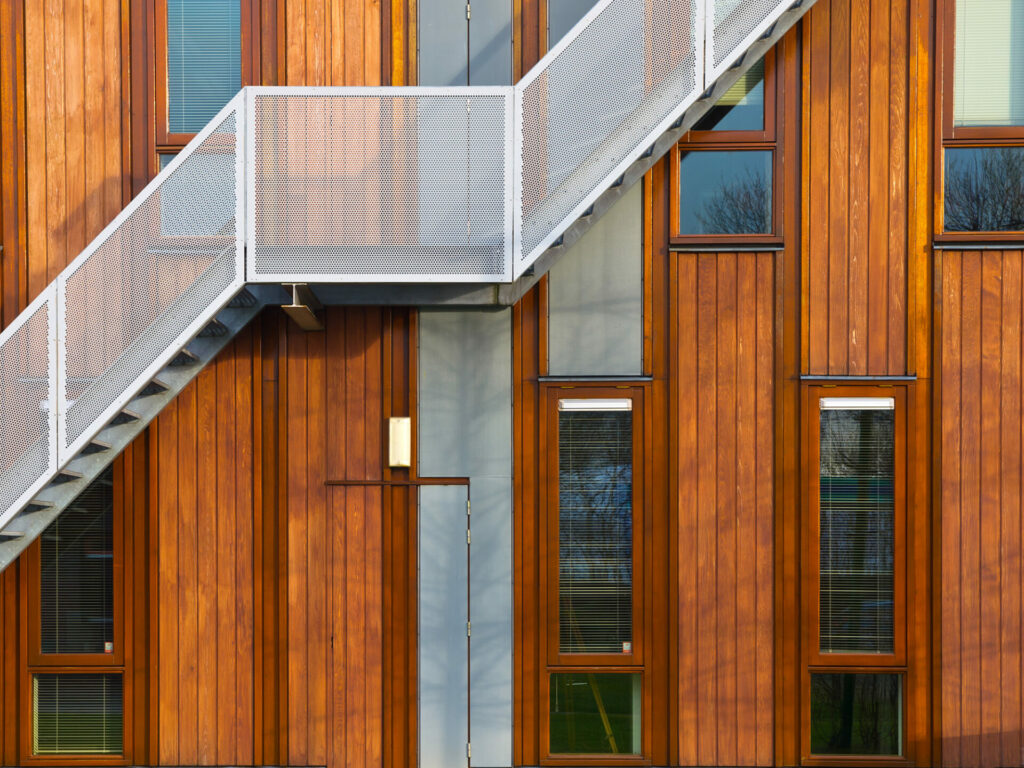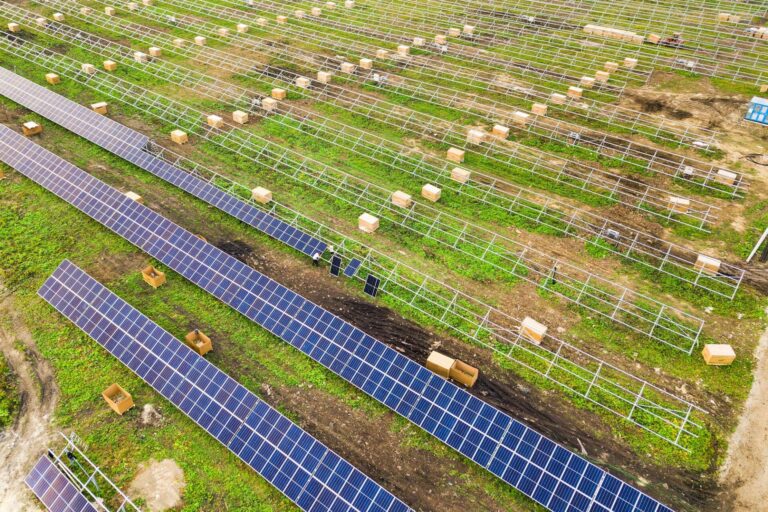Across the construction industry, viable solutions to concrete and steel –the most carbon heavy materials—are at various stages of development. Solutions that can potentially reduce the emissions generated by building and construction are either being trialed, tested or implemented on a small scale. While there are a number of promising developments, many are prohibitive due to their cost or the intricate processes needed to produce them. One material is different, however. Wood has been an integral part of the construction landscape for millennia. It is an aesthetically pleasing, sustainable low-carbon alternative to concrete and steel. Furthermore, the benefits of the material are well-known which means that is already enjoys the trust of industry professionals. As we search for solutions, many are turning to mass-produced timber as a viable and accessible option.
For many years, people have looked to Scandinavian countries for examples of innovative thinking and creative ideas. From automotive industries to the education sector, new models of design and practice have come from this part of Northern Europe. As Sweden, like every other country, experiences huge challenges in relation to meeting its emissions targets, it seems that it will need to come up with a solution that ensures a combination of growth and sustainability for its residents. Its plan, scheduled to begin in 2025, aims to redefine urban living through “sustainability, innovation and aesthetic excellence.” The way this will be achieved? By creating a wooden city.
Urban development company Atrium Ljungberg aims to produce the largest wooden city in Stockholm, Sweden with the first of these buildings due to be installed by 2027. The “world’s largest wood city” will be built in the Stockholm neighborhood of Sickla. The area, spanning over 250,000 sq m, will comprise of 7,000 office spaces and 2,000 homes, all created using timber. Annica Ånäs, CEO of Atrium Ljungberg, believes that the project is one that sets Sweden out as a global leader in the race to produce more sustainable living. “We are proud to introduce Stockholm Wood City. This is not only an important step for us as a company, but a historic milestone for Swedish innovation capability. Stockholm Wood City manifests our future. From tenants, there is a strong demand for innovative, sustainable solutions – a demand that we meet with this initiative.”
For those at Atrium Ljungberg, the project is one that will be firmly rooted in the environment in which the materials were created. According to the developer, nature-informed aspects will be heavily featured with the overall feel of the area being similar to that of a forest. “We sought to create an urban environment infused with the serenity of a forest, resulting in a dense, open space that bears the distinctively minimalistic and functional aesthetic of Scandinavian design. The architects innovatively incorporated natural elements into the structures – for instance, green roofs for better insulation and large windows to let in natural light, embodying our vision of a city that thrives in harmony with nature.” This consideration is an important one. As the developer explains, a side-benefit of building with this material is the positive impact it has on the wellbeing of residents. “Research has also proven other strong benefits, such as improved well-being for people and a faster, quieter construction process.”
With any alternative building material, however, concerns will be raised. It is not surprising. For an industry that prides itself on dependency and strong foundations, safety and security are vital considerations. No doubt, questions will be asked on the structural and wider safety aspects of using timber for small to medium sized structures. As Atrium Ljungberg explains, the material is made from fire-proofed timber and has massive structural benefits. “Engineered wood forms a protective char layer on the surface that retains much of its structural strength, contributing to a safer structure.”
“Mass timber is a new category of wood product that can revolutionize how America builds.”
This view is echoed by Think Wood, a provider of commercial, multi-family and single-family home design and build resources to architects, developers, and contractors. Think Wood is run by the Softwood Lumber Board and was established to promote the benefits and uses of softwood lumber products in outdoor, residential and non-residential construction. Programs and initiatives supported by the SLB focus on increasing the demand for softwood lumber products in the United States. According to the group, timber is both a reliable and sustainable choice. “Mass timber is a new category of wood product that can revolutionize how America builds. It is comprised of multiple solid wood panels nailed or glued together, which provide exceptional strength and stability. It’s a strong, low-carbon alternative to concrete and steel. Mass timber building designs are pioneering better places for us to live and work, and new code changes were passed for the 2021 code cycle that allow mass timber buildings up to 18 stories tall.”

As a relatively new material in terms of mass production and taller structures, it might come as a surprise to learn that mass timber has been used in a large number of projects across North America. One of the most recent is George Brown College’s The Arbour. While the project was delayed due to the pandemic, when completed, the 10-story building will provide an exciting alternative within the Toronto skyline. For those at Think Wood, the project will change the way we approach construction. “The $134-million project at the college’s Waterfront Campus will use an estimated 3,000 cubic meters (1050 tons) of wood and will include a mass timber research hub, helping to further advance the very technology driving the building’s construction and design. Its environmentally friendly stand-out design, created by Moriyama and Teshima Architects and Acton Ostry Architects, targets net zero emissions.” For the college itself, the COVID delay has not dimmed its belief in the project, or its long-term benefits. Building strong and sustainable infrastructure will be an important part of our community’s recovery. That’s why we’re continuing to move forward with The Arbour, Ontario’s first mass-timber, low-carbon institutional building – the future home of our School of Computer Technology, School of Architectural Studies, a childcare center, and a research hub focused on mass-timber construction. This project will create job opportunities for a wide range of skilled workers, while helping establish more environmentally sustainable building practices.”
Wood structures have been in existence for over 10,000 years and there is little we do not already know about the material. However, in recent years, we have indeed made exciting discoveries about it. Not only is it a viable material for structures far beyond small, residential homes, it has the environmental profile necessary to make it a potential gamechanger for the construction industry. Its steady growth in the sector is no cause for concern. In fact, according to those at White Arkitekter, a forward-thinking architectural design firm with offices around the world, it is something to be welcomed. “Wood combines solidity with light weight and is a material that creates unique opportunities. Not only is wood renewable, but it also uses less energy to produce and transport than other building materials. In comparison, wood also saves energy when used in buildings. When you add up all the benefits of wood, it emerges as by far the most sustainable building material – provided the wood we use comes from sustainable forestry.”




















